Oslo Architecture Triennale 2016
Oslo
Transborder Studio has been invited by the curators of the Oslo Architecture Triennale, After Belonging Agency, to make a report on Kirkenes and the Norwegian-Russian borderland. Our report is in the form of a spatial, performative recreation of the Boris Gleb Bar. In the framework of this unique historical event, the idiosyncrasies of the borderland are investigated.
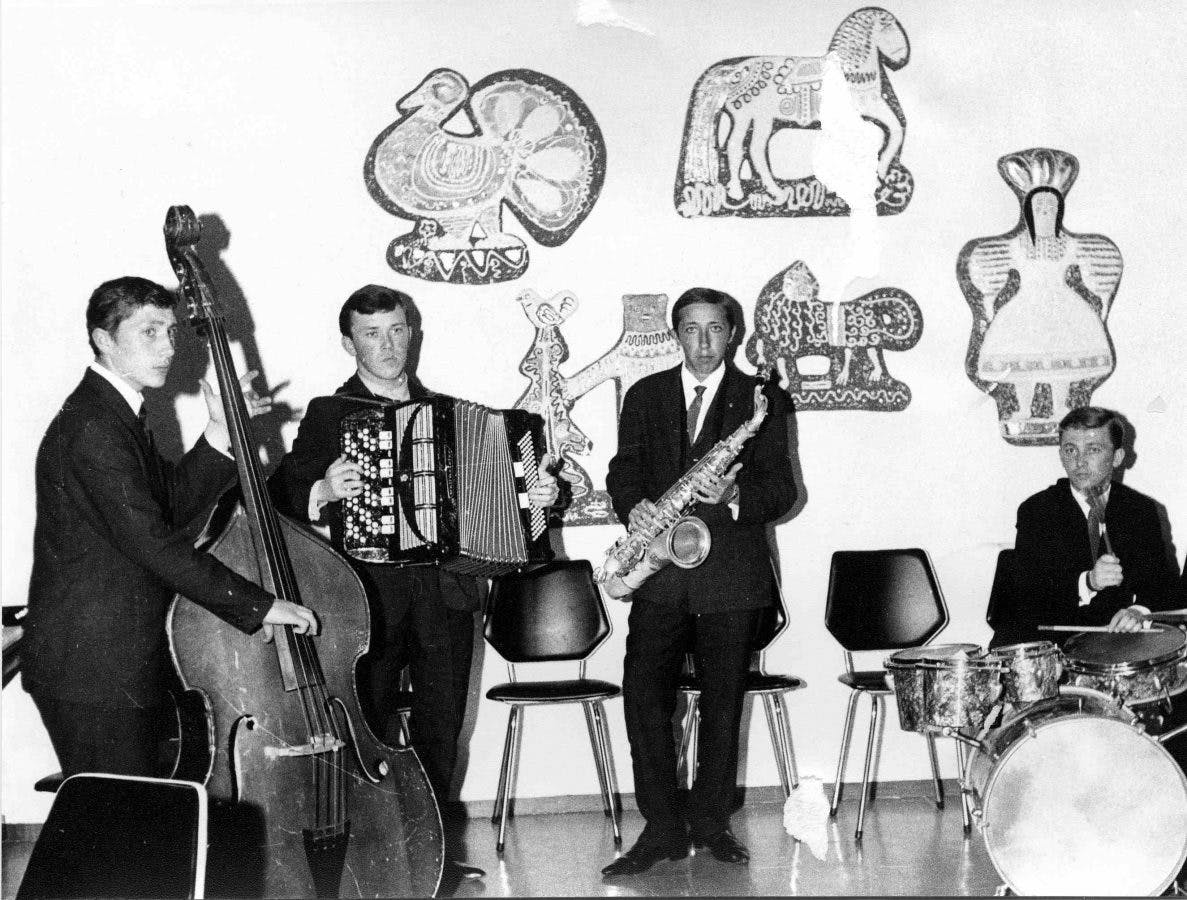
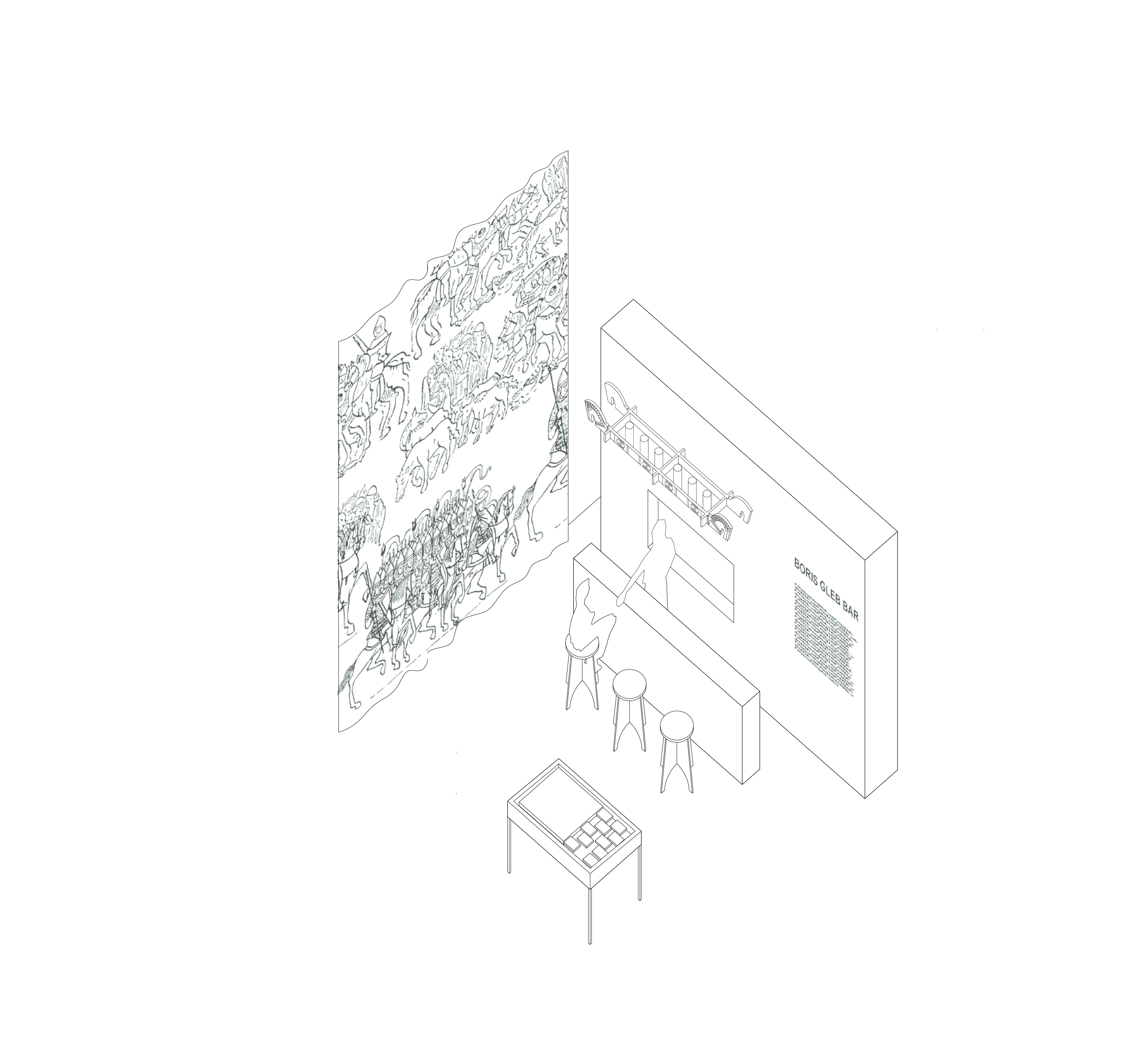
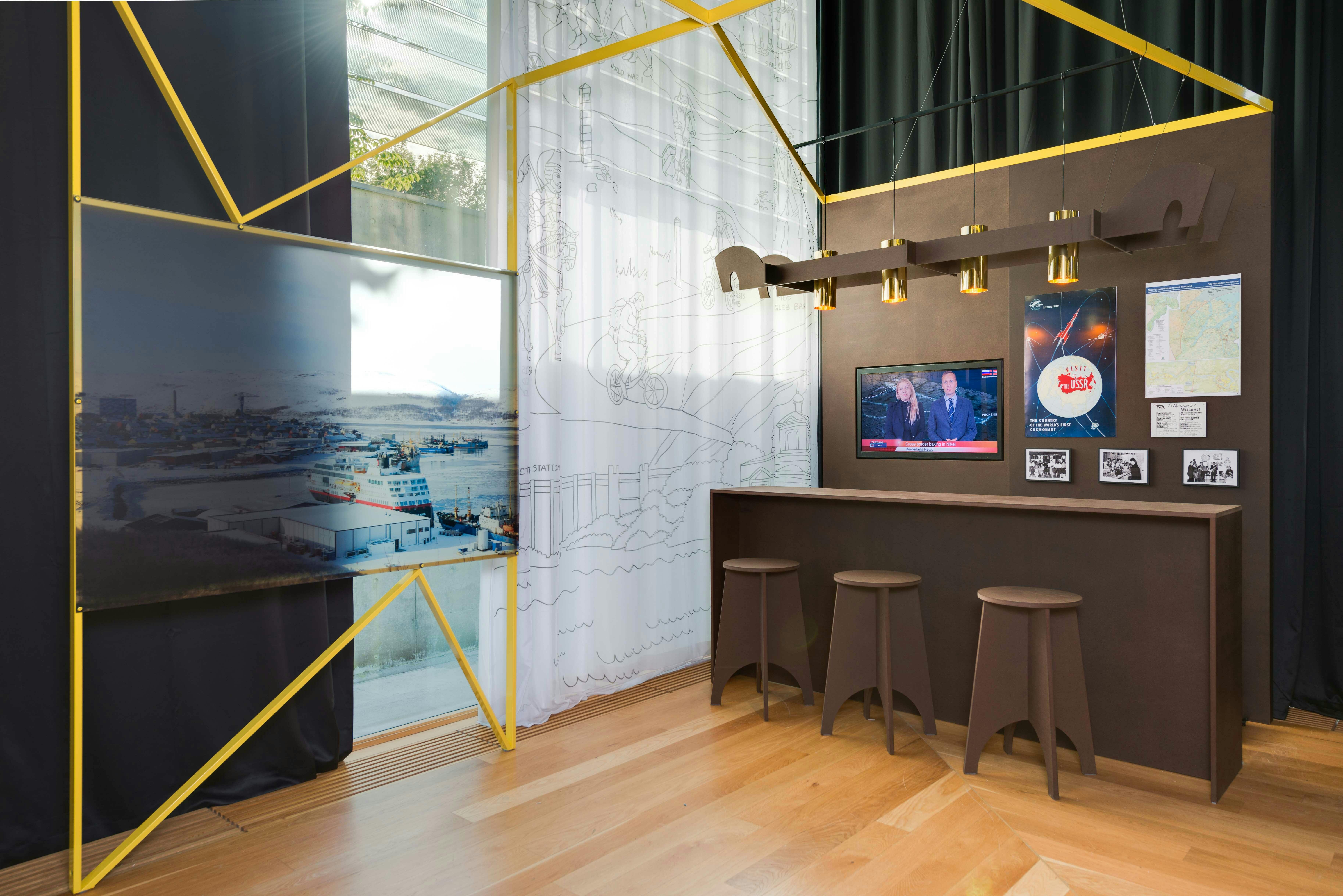
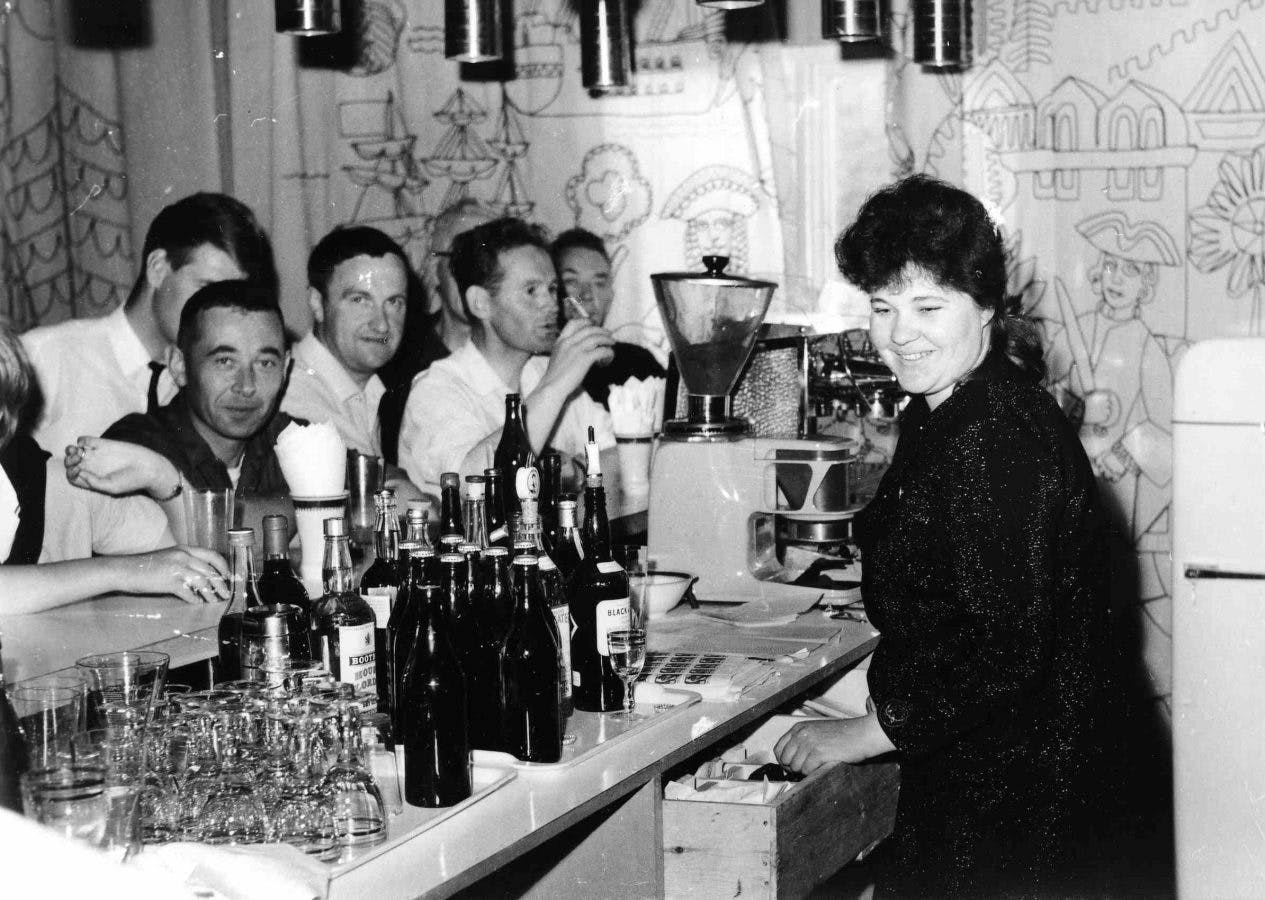
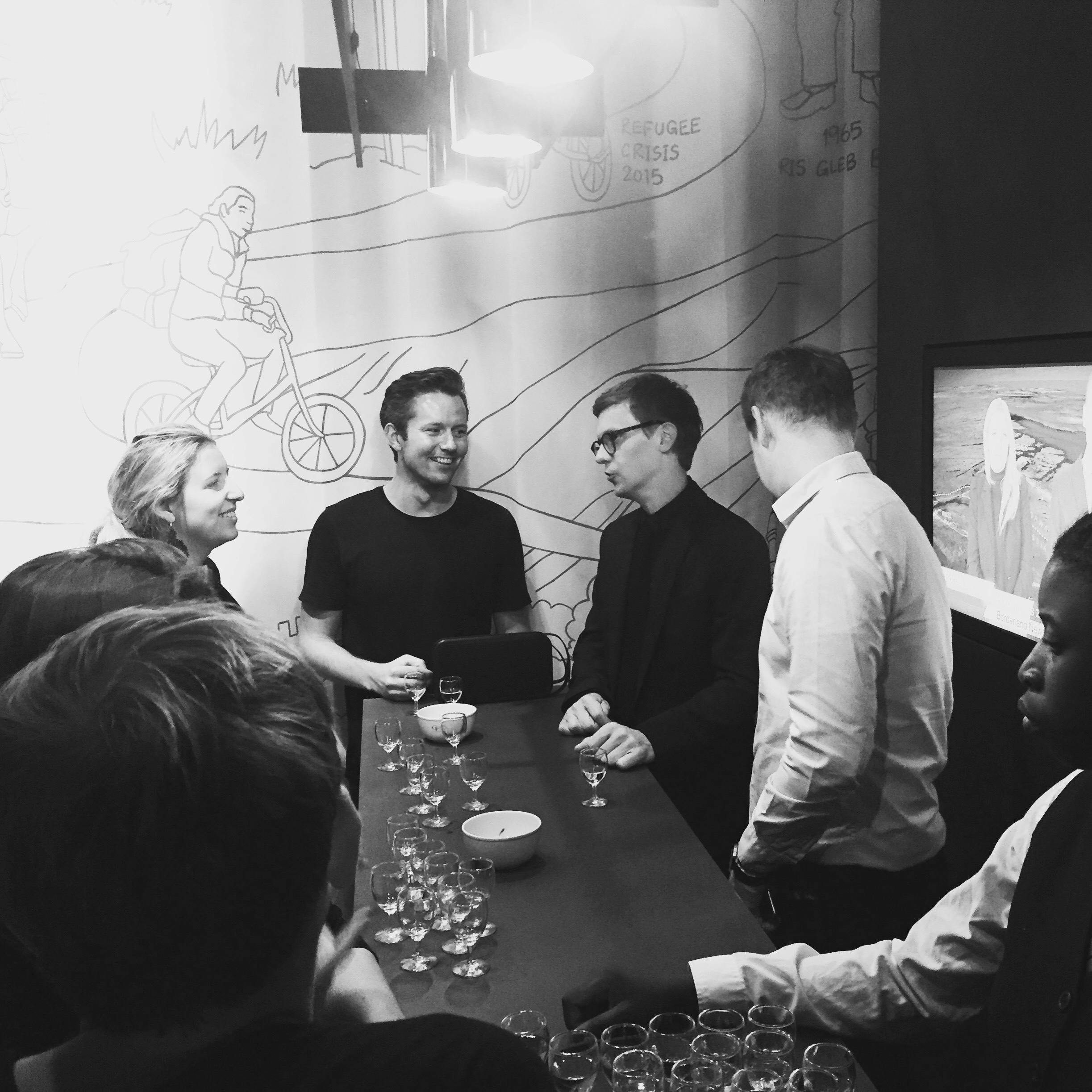
Type
Exhibition
Client
Oslo Architecture Triennale
Date
September-November 2016
Team
Øystein Rø, Espen Røyseland, Håvard Skarstein, Fredrikke Frølich, Søren Olav Saanum Bessesen, Phoebe Chu, Margrete Bjone Engelien
Collaborators
Antrofilm. Supported by Fritt Ord
Transborder Studio has been invited by the curators of the Oslo Architecture Triennale, After Belonging Agency, to make a report on Kirkenes and the Norwegian-Russian borderland. Our report is in the form of a spatial, performative recreation of the Boris Gleb Bar. In the framework of this unique historical event the idiosyncrasies of the borderland is investigated.
The Cold War represented a freeze in the relations between the East and West. Consequently, local ties across the Norwegian-Soviet border were effectively cut off. But one historic event during this period of tension stands out as a contrast to the general situation of separation. For better or for worse, it is a symbol of the borderland potential and the unique program that can evolve from its conditions.
The event happened in Boris Gleb, a small area 5 km south of Kirkenes, just across the border. Following the completion of the Norwegian-Soviet hydroelectric power plants in the Passvik River in 1965, the Russians put up a tourist compound here with a bar, a cinema, an exhibition space and a liquor shop in the barracks built for the visiting Norwegian construction workers. Visa free access to the area was given to all Nordic citizens, a sensation considering the political climate at the time. The Russians wished to continue the arrangement, but Norway said no, suspecting Soviet agents used the place to recruit
Norwegian informants. But for 59 lively days, during the peak of the Cold War, local Norwegians flocked to Soviet to enjoy cheap vodka, propaganda cinema and live music.
The Boris Gleb Bar represents a historic landmark in the borderland history, the point where a symbiotic existence between the both sides came into being in spite of externally imposed limitations. As all borderland events it contains the strange brew of geopolitics, hidden and open agendas, and a basic, local need for finding ways of everyday living.
All photos: Varanger museum